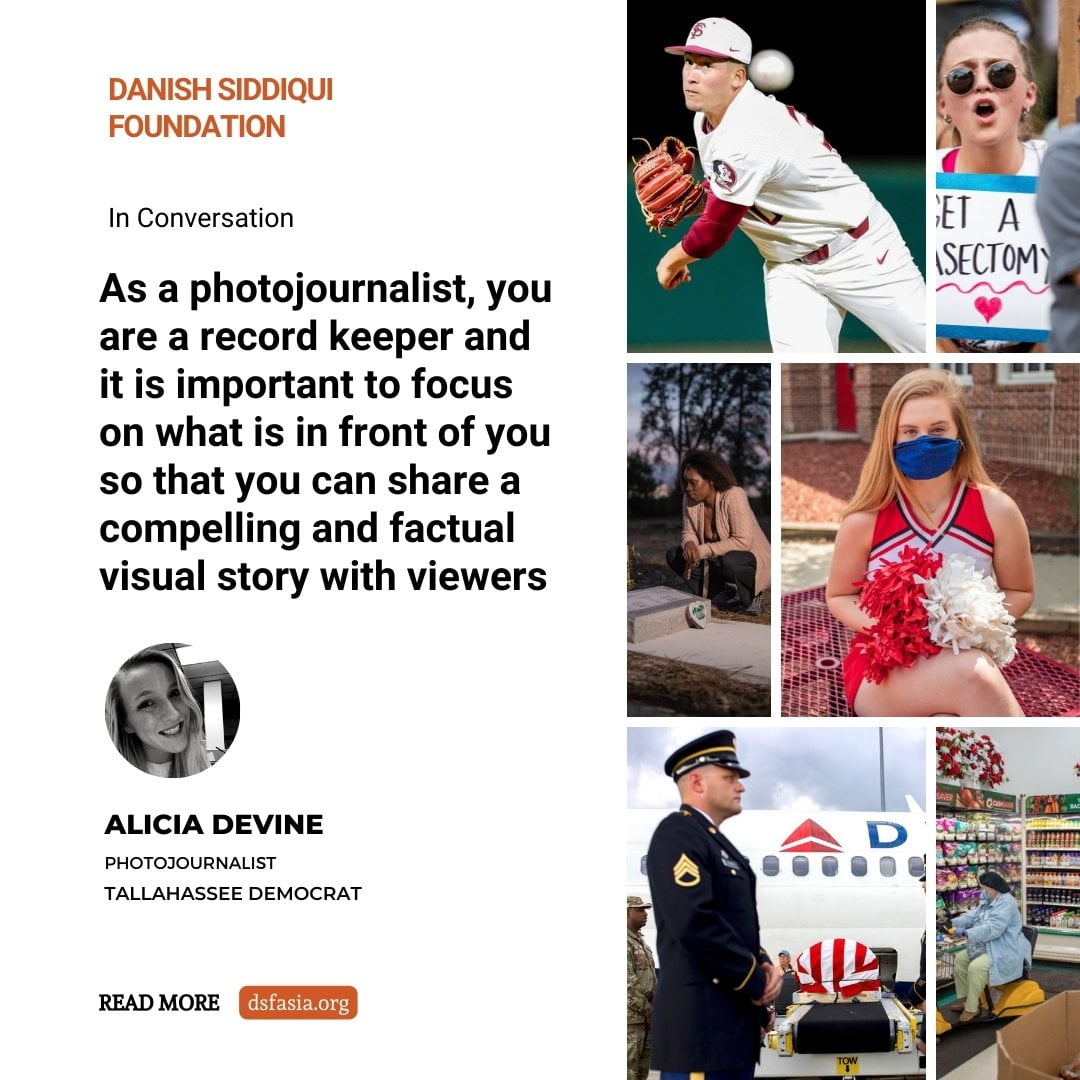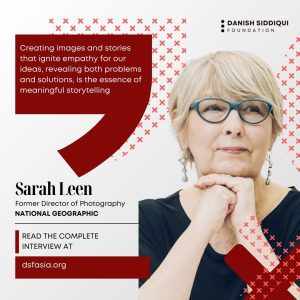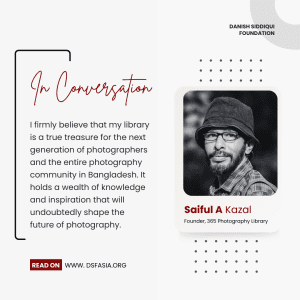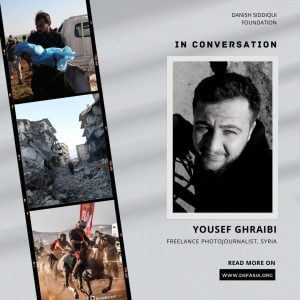
Why did you choose to become a photojournalist?
I wouldn’t say that I chose to be a photojournalist, but I did fall in love with it and chose to stay. I studied fine art photography in college. The focus was on utilizing studio lighting to photograph food, products, and models. At the time, I enjoyed photography but not the direction I was going in within the field. I wouldn’t say I liked directing models or setting up advertisement-like shots. It felt tedious. I interned for a small magazine that featured stories on the University of Alabama football and basketball teams. I covered both teams for a season – practices, press conferences, home games, and even the bowl game and National Championship game. When the internship ended, I wasn’t sure what to do next. I got a summer job photographing youth baseball and softball games but knew that wouldn’t last forever. I was constantly applying to photography jobs, including companies specializing in school and studio portraiture. The Tallahassee Democrat, a USA Today Network paper, was one of a few photojournalism job openings I applied to. It was the only position I applied for that I heard back from. I was initially hired as a part-time photojournalist working most weekends with a focus on high school and college athletics.
I didn’t know how to caption photos or much about AP style. But within my first four months at the Democrat, I committed to learning as much as possible about the photojournalism world. I covered the aftermath of Hurricane Michael, a community coming together after a shooting at a yoga studio, an intense elections result at night for the Florida Governor race, and a court case 18 years in the making. I was hooked. During that time, I received a lot of feedback and critiques from other photojournalists who also worked in the USAT Network and those I ran into while on assignments. They pushed me to work harder and be willing to be uncomfortable while doing so. I became a full-time photographer for the Democrat six months in, and I haven’t stopped shooting since I started here. This is why I say I didn’t choose this field because it wasn’t something I saw myself doing. When I started, I just wanted a paycheck. Now I do it for my community. It’s important to tell their stories, and I want to do them justice.
The photography that accompanies a story typically grabs readers’ attention and does what words can’t always do. The imagery captures emotions, movement, and more that aren’t always conveyed in writing.
Which photographer has inspired you most and why?
Before becoming a photojournalist, I was inspired by Ansel Adams. I love traveling and being out in nature, so I admire his landscape photography was and still is work. As a photojournalist, I am constantly looking at the work of my peers worldwide. I’m always amazed by how someone can take a story that might sound mundane on paper and turn it into something captivating, especially the local stories that don’t always pertain to me and my life but still impact how I view things within my community.
What has been your most challenging story?
Two stories stick out to me when thinking about what we’re the toughest to cover. The first was after Hurricane Michael ripped through Florida’s Panhandle. One of the reporters at the Democrat, Nada Hassanien, and I were sent to find the families of those who were killed by or died during the hurricane.

Sarah Radney was 11 when she was visiting her grandparents in Southwest Georgia. She was sitting on the couch next to her grandmother when she was struck by debris that crashed through the roof, instantly killing her. Her grandparents, father, and stepmother all spoke so highly of Sarah. They shared positive stories of her and the person she was. We learned so much about her and saw so many photos of her contagious smile that I felt we knew her. While we were with the family, Sarah’s grandfather showed us where Sarah was sitting when she was killed – there were blood-dried droplets on the floor. It took everything in me not to cry at that moment. I still think about Sarah and how she impacted me and my work even though we never met.
The other assignment that comes to mind is when I spent an afternoon in the COVID unit at one of our local hospitals. I wore full PPE and only had my phone to record conversations and my two cameras. Mentally, I was having a tough time because I had just found out I was pregnant with my son two days prior. I knew it was risky to go in and do what I was doing, especially while pregnant, but I also knew the importance of sharing the stories of the nurses, doctors, and patients who were battling COVID each day in their own ways. My husband and I ultimately decided that I should follow through and do the assignment.I would be documenting the COVID unit in words and photographs. That day I met with multiple nurses who detailed what their day-to-day lives were like – from being drenched in sweat due to the layers of protection they were wearing to FaceTiming patients’ families so they could say goodbye to their loved ones they’d never see again. I spoke with a patient who struggled to speak from behind her oxygen mask but wanted to spread her message of how serious contracting COVID could be for many so that they could take precautionary measures to prevent getting drastically ill. Sadly, she passed the day the story was publishing. In the last few minutes of being in the unit, I witnessed a man taking his final breaths. At least six nurses were at his bedside to comfort him since family and friends were not permitted inside. I fought back the tears as hard as possible while listening to the nurses whisper to him. Eventually, tears were rolling down my cheeks, and I wiped them away with the sweat dripping from my forehead. That was the first time I was present as someone was dying.

On my drive home, I called my editor and sobbed. He and his wife tried to console me with their words, but what I saw and the stories I heard that day are something I’ll never forget. I wanted to hug my husband, but he was staying at a friend’s out of caution, just in case I contracted COVID. I stood in the friend’s yard and cried. I told my husband what I had just been a part of before going home to cry some more. That day was extremely eye-opening. I could never have imagined what trauma the hospital staff was experiencing daily, sometimes more than once a day.
It’s an assignment that I will never forget.
And your most memorable stories?
One of my most memorable and favorite stories is when I went on Honor Flight. Honor Flight is a day trip for veterans to Washington DC. A group of them are flown to DC to visit the various monuments, Arlington Cemetery, and more as a way to honor their service. It was an extremely long day with a quick turnaround on the story and photos. The veterans were so kind and open to sharing their stories from their time in the war to the experiences and emotions they were having while in DC. I love the photos I captured of them because, for many, this was and would be the only time they would get to visit the monuments. Their emotions were real and raw.
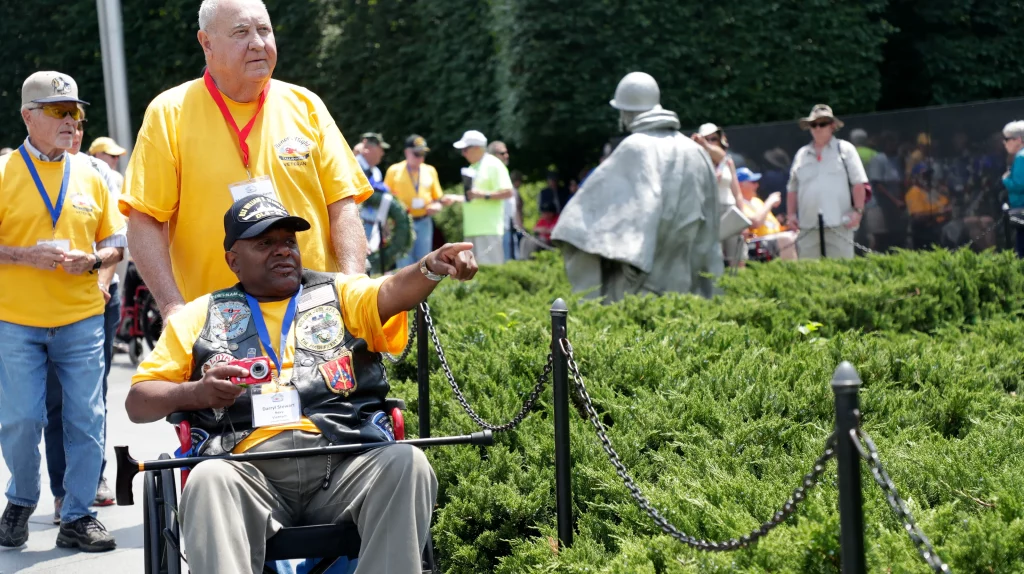
A recent memorable assignment was when I traveled to California in December of last year to photograph the Women’s College Soccer Championship. Florida State University was playing Brigham-Young University for the title. I found out on Saturday that I would fly across the country the next morning to cover the game the following day and then fly home the next. It was a whirlwind. I had covered most of FSU’s home games last season and dreamt of covering the championship. When I got there, I was nervous, excited, and anxious. I wanted to do better than I had all season. I wanted every action shot, and every celebration shot possible if they won, which they did. I was on a high that night. The game was scoreless during regulation time and was decided in a shootout. When FSU scored the winning goal I felt as much joy as some of the players, but I was still as focused on capturing their jubilee as possible.
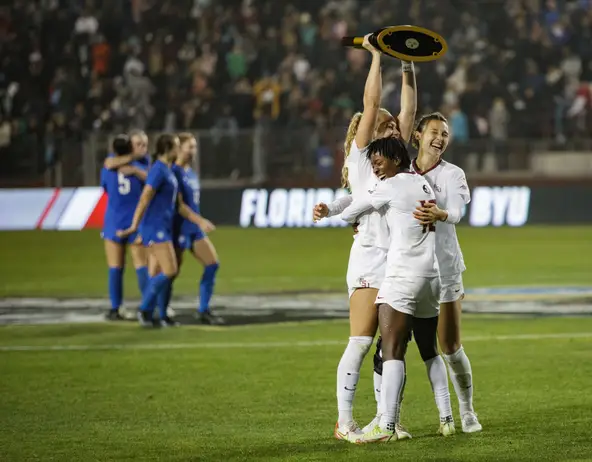
ALICIA DEVINE/TALLAHASSEE DEMOCRAT
I shot the girls sprinting into each other’s arms while photographing the captain running across the field with the trophy above her head. It’s a night I won’t forget because even though the athletes don’t know who I am, I still felt like I was a part of that game. I came back to Tallahassee with dozens of images I am extremely proud of that I will use as motivation to do an even better job photographing their season this year.
How would you describe your style of work? What do your photographs try to convey?
I’d describe my photography as natural, real, and raw. I do minimal editing to any photo – cropping, a touch to the exposure, and maybe the shadows. Otherwise, everything is precisely how it was straight out of the camera. I’m not a fan of strobes or on-camera flash, so 99% of the time, all of the light is natural. I occasionally work in the studio and use strobes in that situation; everything is shot with available light. Nothing is faked. It’s all in the moment. A subject isn’t forced to look one way or feel a certain way. I want to share their story and capture their emotions just as they are. With my images, I’m trying to convey to the readers that this is real life and that it’s not staged just for views or clicks. This is someone’s story that they are vulnerable enough to share publicly, and I am obligated to provide them with an unbiased, safe, and open place to share it.
What do you enjoy the most about your work? And what do you find the most challenging?
I love that every day is different. I never know what might get thrown my way last minute. Even if my day is preplanned with specific assignments, there’s always an element of surprise added, whether at those specific assignments or a last-minute one. I also love meeting new people and hearing their stories. I’ve had the opportunity to travel throughout the Panhandle to step into other people’s world and see what their life is like. The most challenging part is not knowing what I’m about to walk into. I have to be overly prepared to make any situation work.
I’ve been in situations where there is no light, and I have to find a way around it. It could be as simple as pulling back a curtain in the room or needing to open doors, so the light down the hall leaks into the room.
I’ve also been in chaotic scenarios where I didn’t know which way to look or who to listen to – like during a protest in 2020. Nineteen people were arrested during one protest where hundreds of law enforcement officers appeared on site. There was screaming, people pulling on their friends to stop the officers from arresting them, chanting from the protesters, and some recording everything on video. Dozens of journalists on the scene trying to stay out of the way but also trying to capture every second of it all. It’s stressful to be in those situations, but I have to remember this is my job, and I owe it to my community to accurately tell their story with an in-depth perspective.
Which camera and lenses do you use? Which are your favorites?
In my bag, I’ve got a Canon 1DX Mark II and a 1DX. I prefer the Mark II because it does better in low lighting, and I’ve had it in my kit longer, so I feel more comfortable with it even though the two cameras are very similar. My go-to lenses for low lighting scenarios are a 16-35mm f2.8 and a 35mm f1.8. The aperture on both lenses allows me to capture details that I wouldn’t be able to with a lens whose widest aperture is f4. For football, lacrosse, softball, baseball, and soccer, I always use the 400mm f2.8. I can capture action halfway down the field, whether it’s a daytime or night game. When I cover volleyball and basketball, I typically use a 70-200mm f2.8 and 35mm. These two lenses give me a wide range to work with to capture more detailed action while also capturing wider shots with a crowd’s reaction in the background.
Which social media platforms do you often use ? How have they helped you?
I use Twitter and Instagram the most for sharing my work. With Twitter, I’ll usually post photos and a link to the gallery or story within an hour or so (depending on when editors publish them) of the end of a game or a function.
I feel that my Twitter followers want things now and are more responsive to almost immediate postings. With Instagram, I take more time when creating a post. I usually wait to share images at times when I know more people are likely to be on their phones scrolling through social media.
I also write a more in-depth caption to accompany the images since I can’t put a link in the caption.
Twitter: https://mobile.twitter.com/alicia_c_devine
Instagram: https://www.instagram.com/adevinephotography/
How do you keep yourself motivated and inspired?
I’m extremely motivated when I get to work on long-term projects.
I enjoy having more time to spend on a subject and getting to know them. I’m more immersed in the story, and that’s when I feel I capture my best work. In the day-to-day assignments, I motivate myself by trying to find unique points of view to make an assignment that may not be very visual into something more interesting.
I’m always looking at others’ work. I scroll through Twitter to see what everyone has been working on and pull from that for possible stories I could work on in my area. I also look at fellow photojournalists’ work to find new ways to photograph situations. It could be looking for light differently or shooting from a different angle. Either way, I find it’s always best for me to look to others for inspiration.
How do you prepare before any assignment?
I always triple-check my bag before heading to the assignment. I ensure I have all the gear necessary to complete the shoot to the best of my abilities. I also talk to the reporter, if there is one, beforehand to get more insight into what I’m about to walk into.
I want to feel prepared and confident when I start an assignment because that allows me to help make the subject feel more comfortable. If I’m stressed and ill-prepared, it’s likely to show and rub off on the subject.
How do you manage stress and work pressures?
Honestly, I’m not the best at managing stress. I typically let it all build up and then hit my breaking point. I never let that happen while I work. I always wait until I’m home to break down. I’ll cry and vent to my husband about everything, or I’ll cry and lay in bed. I’m also prone to taking on more than I should. I never say no to assignments or projects and weigh myself down by spreading myself too. It’s not the healthiest way to go about things, and it’s something I’m working on.
What are the key qualities/skills a photojournalist should have?
Tenacity. I’m always determined to do my best, achieve my goals, and then set new ones to surpass. It’s also important to be confident. Like I said, if you’re unprepared and unsure of yourself, it’ll show and impact your work and the comfort of the subject you’re working with.
Flexibility is another essential characteristic to have. Things change in a second, and you have to be able to adjust to it. If you’re set in your ways, you won’t be successful because, more often than not, something happens, and you have to make it work with what you know and your gear.
What does ethical photojournalism mean to you?
Ethical photojournalism is what I practice and strive for with every assignment. I want to capture everything just as it is – no extreme editing, no staging. I photograph things as they happen, and I want to document things as if I were passing by, and this is precisely what I would’ve seen at that moment.
What advice would you give to aspiring photojournalists?
I’d tell aspiring to be willing to do what makes you uncomfortable. In your career, you’ll likely cover a wide variety of topics, and you may not always agree with the subject matter, but it is so important to be there as a nonpartisan. Your job is to document and be the eyes (and sometimes ears) for those who aren’t there. As a photojournalist, you are a record keeper and it is important to focus on what is in front of you so that you can share a compelling and factual visual story with viewers.
I’d also tell future photojournalists to learn from others. Draw inspiration from what other photogs are doing. Look to them for angles, compositions, and/or lighting scenarios you may not have thought of as a way to elevate your work.
Don’t be afraid to reach out to a veteran photojournalist to ask for help or advice. I’ve taken one-on-one private classes with photojournalists who have been in the business for decades. During those, I had a list of questions for them, from the most basic like “what gear do you use,” to more in-depth like “can you break down this photo and how you achieved something of this caliber” while pulling up one of their photos that stands out to me.
I’ve become virtual friends with other photojournalists by doing this and now they’re people I can use to bounce ideas off of, brainstorm for future assignments with, and get feedback on images I’ve shot and how to make them better.
Disclaimer: The views and opinions expressed by those interviewed by the Danish Siddiqui Foundation, including all program participants, are solely their own current opinions regarding events and are based on their own perspectives and opinions. The views and opinions expressed do not necessarily reflect the views or opinions of the Danish Siddiqui Foundation, or the companies with which any program participants/interviewees are, or maybe, affiliated.

